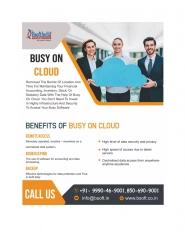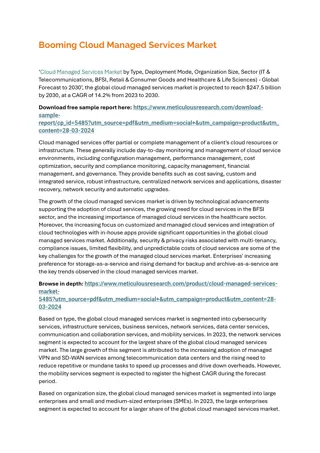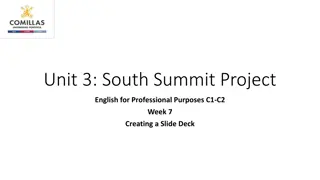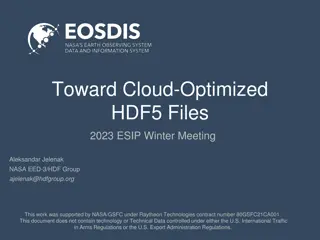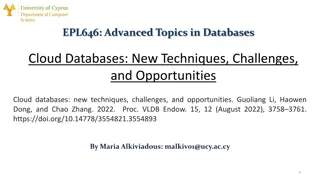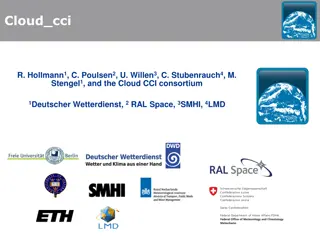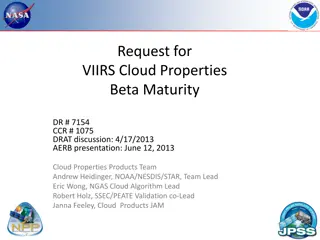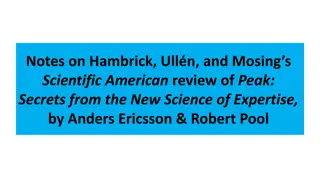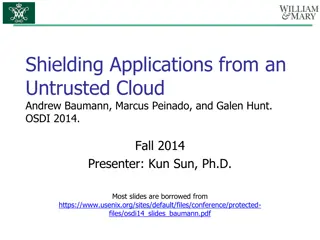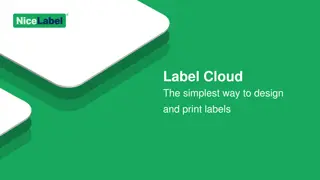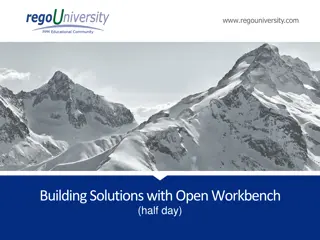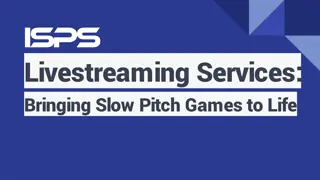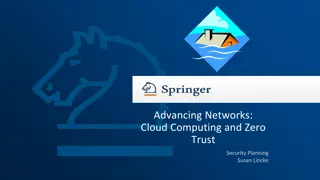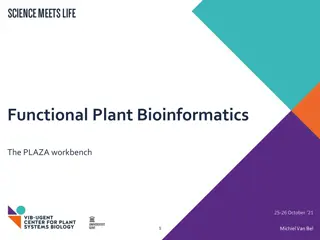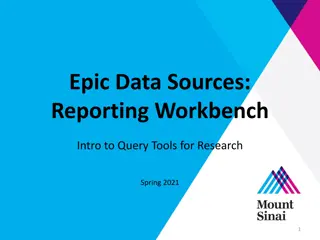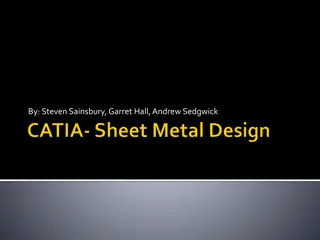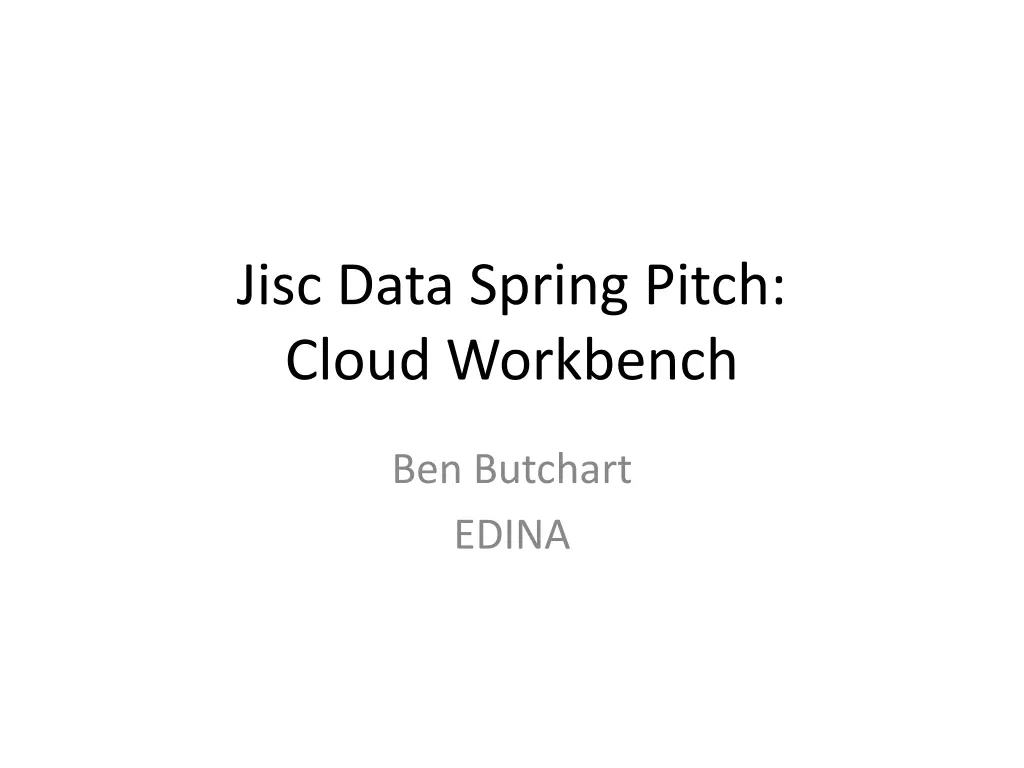
Optimizing Research Workbenches on Cloud for Collaboration
Elevate research workflows by transitioning individual desktop workbenches to a cloud environment, enabling seamless collaboration, data integration, and scalability. Dive into scoping studies, software requirements, and stakeholder identification to create a framework for shared workbenches and data narratives visualization.
Uploaded on | 1 Views
Download Presentation

Please find below an Image/Link to download the presentation.
The content on the website is provided AS IS for your information and personal use only. It may not be sold, licensed, or shared on other websites without obtaining consent from the author. If you encounter any issues during the download, it is possible that the publisher has removed the file from their server.
You are allowed to download the files provided on this website for personal or commercial use, subject to the condition that they are used lawfully. All files are the property of their respective owners.
The content on the website is provided AS IS for your information and personal use only. It may not be sold, licensed, or shared on other websites without obtaining consent from the author.
E N D
Presentation Transcript
Jisc Data Spring Pitch: Cloud Workbench Ben Butchart EDINA
Cloud Workbench Elevator Pitch Every researcher has their own unique set up a research workbench which is highly optimised with tools, scripts and other digital glue, along with datasets and data feeds they use as part of their workflows. It takes time to achieve this set up - as it s on a local machine often hard to replicate, collaborate. Researchers have to grab data from many sources, clean it up and bring it onto their workbench to integrate with their own data. Large datasets can be problematic to download and work on. Why not put this highly productive research asset on a cloud VM, with high performance fabric infrastructure to access large reference data Researchers can quickly replicate, share and combine with collaborators workbenches. Researchers can expose research outputs as web services and APIs. Having tools in one place will provide access to the data narrative. Start small, but can scale up your processing and storage using the same workbench. Bring the tools to the data. Red and Blue Sky Elevators at Aston University (cc Ben Butchart
3 month objectives Scoping Study (survey what researchers have on their existing desktop / workbench) Datasets Software Interface requirements (data search and management) API s and web services. Licenses and commercial providers (ESRI, Microsoft) Difference between disciplines (geo sciences, BiMs, architecture) How could you visualise a data narrative? Identify Other Stakeholders Cloud solution providers Data providers Tool providers (e.g ESRI, qGIS) Teachers Technical scoping and evaluation for geospatial research workbench. Review cloud provider/technology work best (e.g Docker, Puppet, Vagrant) in research environment? Develop technical architecture to allow 3rd party tool integration.
Longer term objectives Build and run a pilot for geosciences research community. Cloud management user interface. Web based (SaaS) interface. Implementation for other disciplines how can others roll out for their area of expertise? Create a framework for others to create their own workbenches. Catalogue of workbenches. Partial sharing of workbench.
Deliverables ( 3 month) Requirements / stakeholder analysis report. Technical architecture proposal. Identified solution partners / data providers. Wireframes/ prototypes used for usability / requirements analysis.
Longer Term Deliverables Pilot for geospatial cloud workbench. Simple cloud management interface. Workbench component sharing Registry / Discovery of workbenches Integration with 3rd party tool providers developers.
Resources ( 3 months) Business analyst / stakeholder engagement (0.5) Technical architecture (0.2) Engineer (0.2) Travel & accommodation & events( 3000) Infrastructure ( 500- 1000) (or Azuredly nothing) Software licensing ( 1000)
Resources ( 6-9 months) Same general skills needed as in first phase but with more engineering effort as move into building and running a pilot.
Milestones ( 3 months) Identify survey groups. Run survey. Initial findings reported. Initial prototype / wireframes. Solution partner found. Technical architecture proposed. Technical evaluation completed.

